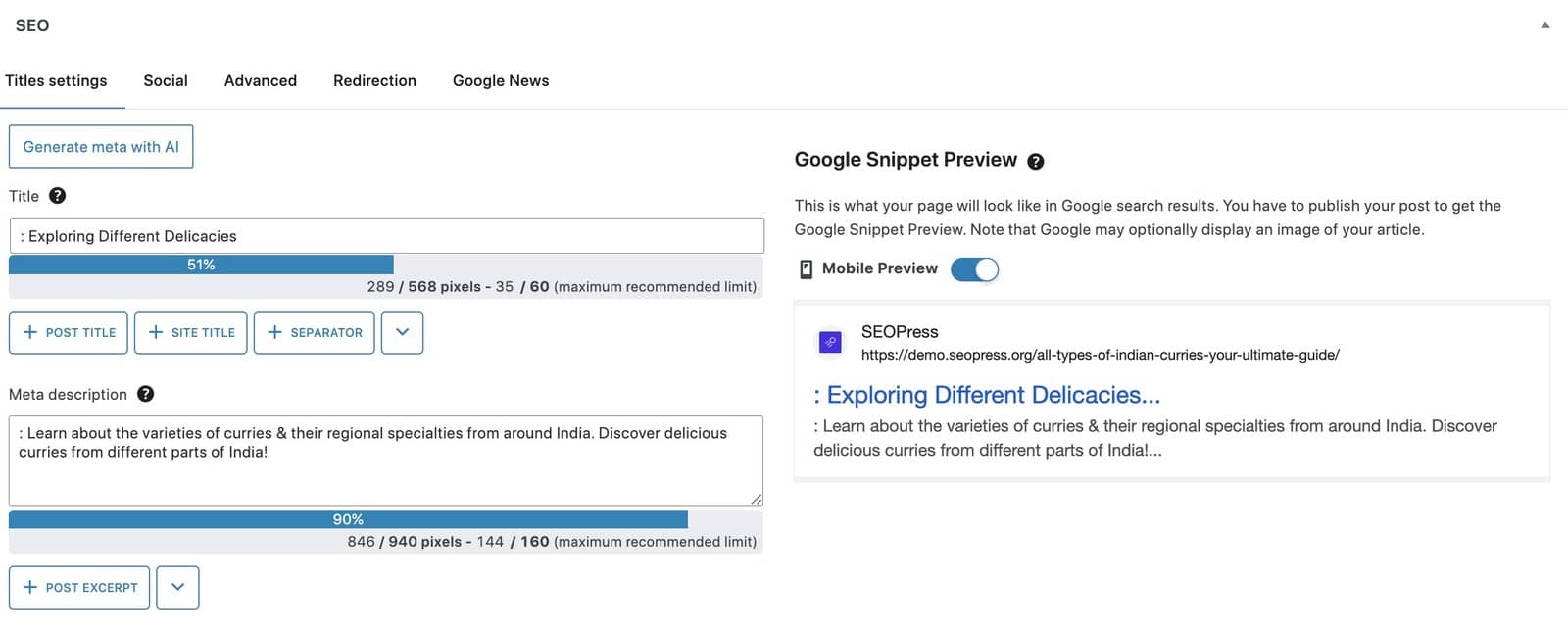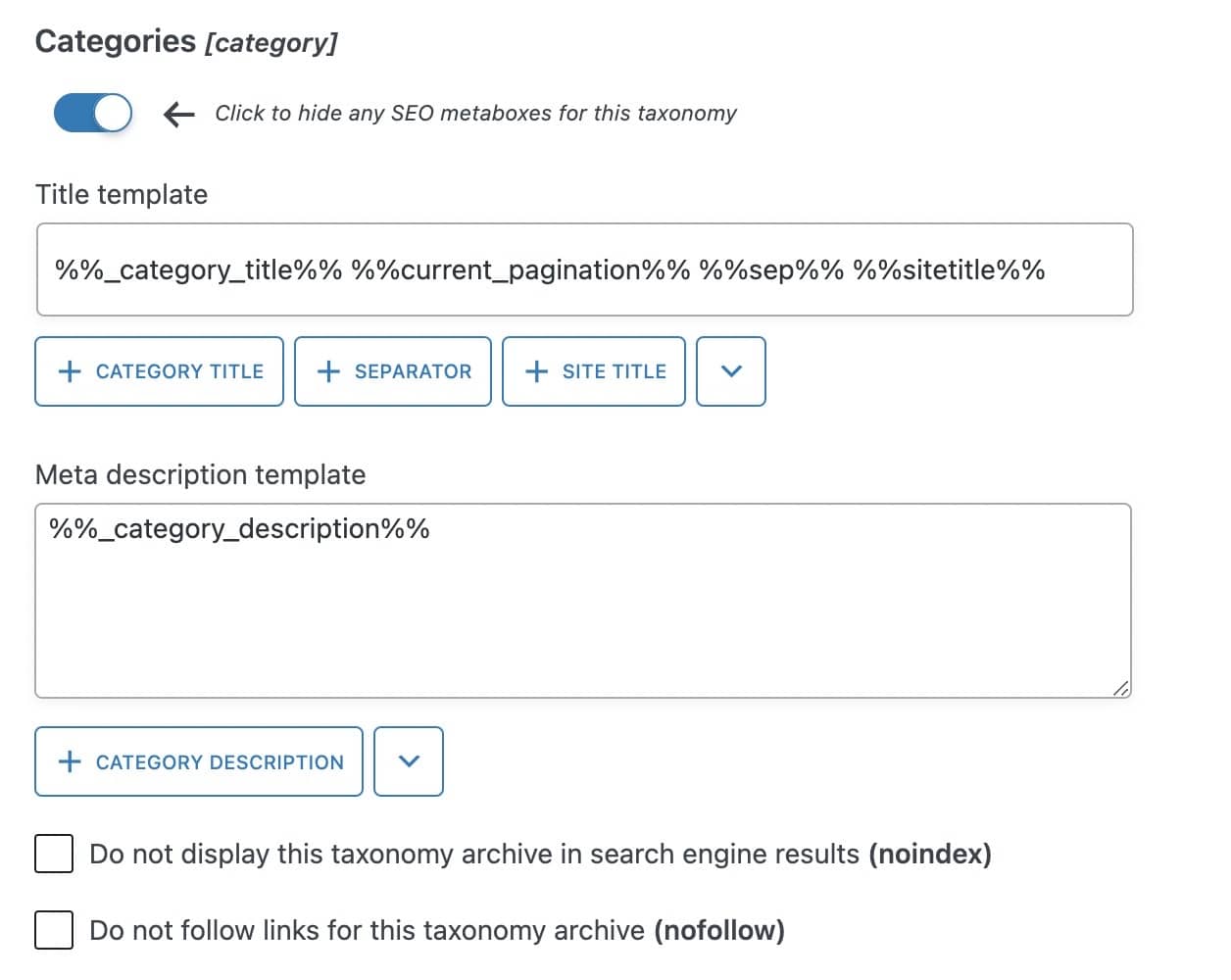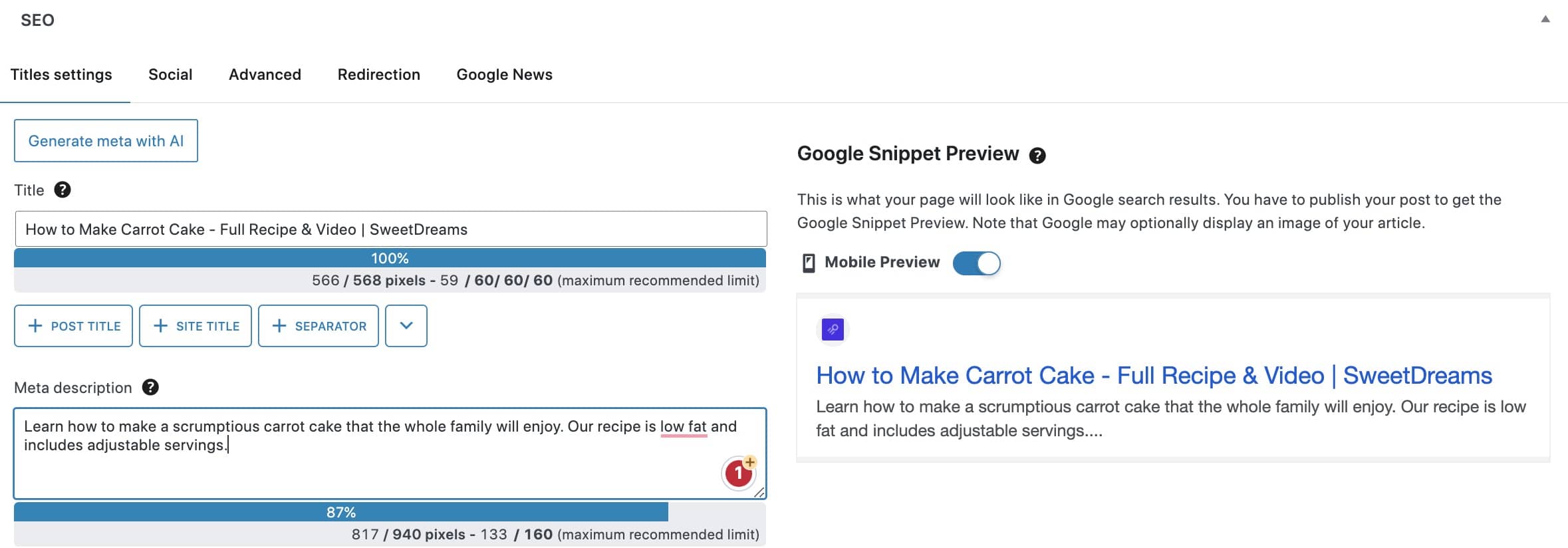Want to improve your WordPress SEO? Then you need to optimize your title tags!
Title tags are an important part of on-page SEO. They’re the first thing that users see when they search for something, and they’re also used by Google and other search engines to rank pages. So if you want to increase your website’s organic traffic and click-through rate (CTR), it’s crucial that you master the art of title tags.
Not sure how to optimize your title tags? A dedicated WordPress plugin can help you optimize your title tags for your site’s posts and pages. In this article, we’ll focus on a plugin called SEOPress and show you how to use it to enhance your title tags. We’ll also introduce some handy hints on how to improve your title tags even further.
What is a Title Tag?
A title tag is an HTML element that specifies the title of a web page. It is typically used to display the title of a page in search engine results. Title tags are often used to help users and search engines quickly identify the content of a page in a concise and accurate manner. In fact, the title tag is often the first point of call for a search engine crawler like Googlebot. It’s extremely important that your title tags clearly tell search engines and potential visitors what your pages are about.
A title tag is similar to a meta tag, which is a description of your website/web page that appears when you hover over an open tab on your browser. A meta tag often uses the same text as a title tag.
Title tags differ from the initial heading at the top of your web page. A title tag refers to the information that appears in your browser window (and in the part of code called the head), while the first heading in your web page is called the header tag and forms part of the website’s main body (in the part of code called the body).
Why Are Title Tags Important?
Title tags help search engine crawlers such as Googlebot crawl and index your content. Naturally, your title tag is supposed to indicate what your web page is about, so it gives search engines a lot of context to work with.
The title tag is often the first thing that users see in the SERPs when they search for something, so an eye-grabbing title tag will be more effective. As such, the title tag will affect your web page’s organic traffic and CTR.
Title tags make it possible for you to present a different title in search engines from the title you use on the page/post itself. This is important because your original title will be affected by character limits in the SERPs, as the title space is usually limited to 60 characters. Therefore, using the post title won’t work as well as a title tag.
How Do I Add Title Tags to My WordPress Site?
By default in WordPress, you can add your website’s title tag by navigating to Settings and filling in the first field in General Settings: Site Title. However, you don’t have the option to create title tags for your blog posts or other web pages.

For pages that don’t have a dedicated title tag, search engines will display the main heading, which, as we’ve seen, is not ideal. Such headings are often longer than 60 characters and therefore risk getting cut off in the SERPs. This can put off potential site visitors who would be more inclined to visit pages with a snappier and more effective title tag.
SEOPress, an SEO plugin for WordPress, solves this issue for you by allowing you to easily add title tags and meta descriptions to your pages and posts. Let’s introduce you to the plugin and show you how to use it.
Introducing SEOPress

SEOPress is a freemium all-in-one SEO plugin that includes a wide range of functionality to help your website rank better. SEOPress is used by many high-profile international sites, including FotoFlexer, Gazette Sports, and the Center for Neurocognitive Excellence.
SEOPress makes it really easy for you to add title tags and meta tags to WordPress through its in-built SEO metabox. Most of the functionality included for title tags and meta tags is available in SEOPress Free, but the premium version of the plugin, SEOPress PRO, comes with a wide range of additional features including OpenAI integration, which is particularly relevant for writing title tags and meta tags.
SEOPress Free
Let’s take a look at the features you get with SEOPress Free for adding title tags to your WordPress posts and pages:
- SEO metabox: Using the SEO metabox, you can easily input your title tag and meta descriptions for any page or post, using the character and pixel recommendations as a guide.
- Accessible editing: the SEOPress metabox can be edited via the Gutenberg editor in the site’s back end or edited on the front end in the live view.
- Google Snippet Preview: The metabox comes with a Google Snippet Preview, so you can easily see what your title tag will look like in SERPs.

- Page-builder friendly: SEOPress works with all page builders, including Divi, Elementor, and WP Bakery. This makes it a useful tool for all WordPress users, regardless of which page builder they prefer.
- Dynamic variables: SEOPress has over 50 dynamic variables that you can easily insert into your title tags to automate the process. This is incredibly handy if you have lots of content you want to add title tags to, or if you want to ensure consistent styling for all your posts and pages. Notable examples include ‘post title’, ‘site title’, ‘article author’, etc. You can also create your own custom variables.

If you go to the WP backend and go to SEO > Titles & Metas, you get even more settings for title tags:
- You can define the site title, alternative site title, and meta description for your homepage.
- You can create global title tags for posts, pages, products, archived pages, and taxonomies like categories, tags, and product categories.

SEOPress PRO
SEOPress PRO gives you access to all the features in the free version and many more. One feature that’s specifically relevant for generating title tags is OpenAI integration. OpenAI will analyze the content of your page, post, or custom post type and automatically suggest a suitable title tag for your page.

This feature is incredibly helpful in generating mass titles for multiple pages in batches. Whether you have multiple pages needing SEO title optimization or are short of ideas for one page, the OpenAI integration allows you to create title tags for all page types quickly. This feature is also available for meta descriptions!
There are lots of awesome ways you can use SEOPress PRO, such as:
- Integrate it with Google Search Console and Google Analytics to access their respective dashboards right in your WordPress backend.
- Use the Content Analysis tool for internal linking suggestions and keyword recommendations to improve your pages.
- Create advanced sitemaps, including video sitemaps and Google News XML sitemaps.
SEOPress PRO is excellent value at $49 per year for unlimited sites. You’ll need first to install the free plugin and then extend the functionality using the PRO plan.
Top Tips for Optimizing Title Tags
In addition to using SEOPress, you can optimize your title tags by following some best practices outlined below:
Include a Focus Keyword
Search engine bots will look for keywords in the title tag to understand what the page is about. Your focus keyword is the primary keyword that you want to rank for in search engine results, and it should be included in the title tag. You will usually optimize your entire post to rank for the focus keyword.
However, if you overstuff your title tags with keywords, this is likely to work against you. This signals to search engine crawlers that you are trying to ‘cheat’ your way into ranking as opposed to creating high-quality content with topical authority, so your content will likely get ranked lower as a result.
Write an Engaging Title Tag
Your title tag is the first thing your potential customer or visitor sees on a search engine. An eye-catching title tag will help draw users to your page as they spot it in the search engine results. Placing keywords at the front of the title tag will also draw the reader to the most relevant information on the page. Existing examples include:
- ‘I am a food blog – Celebrating the awesomeness of food’, from I Am A Food Blog
- ‘WooCommerce – Open Source eCommerce platform’, from WooCommerce
Introduce Your Brand Name
Often the most important part of any website is the brand name. Including it in the title tag will help foster brand recognition for the user and ensure they see it right at the start of their Google search. Introducing your brand name in the title tag is also extremely SEO-friendly and could boost your SERP listings.
You can find more SEO tips in our dedicated guide. Although it’s not a fixed rule, we recommend placing your brand name at the end of your title tag to ensure that your focus keyword is at the start of the title.
Less is More
The more concise your title is, the better. Search engine results often display the title tag’s first 60-70 characters (equivalent to 600 pixels). This makes it important to include the most important keywords or information at the start of the title. Google only displays the first 50-60 characters; Bing displays around 65, and Yahoo around 50-60. Shorter title tags will also make your SERPs more mobile-friendly and easier to read for people browsing on their phones.
With all this in mind, here’s an example of what an optimal title tag could look like, using all the best practices we’ve outlined above. This is for an imaginary food blog called SweetDreams, writing an article on how to make carrot cake:

Take Your Title Tags to the Next Level with SEOPress
Quality title tags can help make a significant impact on your click-through rate and organic traffic. They are essential for helping crawlers understand your site and index it appropriately. With the help of an SEO plugin like SEOPress, you can easily add title tags to your posts and pages on your WordPress website.
SEOPress Free includes a high level of functionality for title tags, including a user-friendly SEO metabox for user-friendly editing and a Google Snippet Preview. You can also edit content in the backend or frontend to optimize your site title tags and include dynamic variables on posts and pages. However, SEOPress PRO, with its OpenAI functionality, really is a game changer for those needing to generate a high volume of metadata quickly.
Try SEOPress PRO for as little as $49 a year. If you are trying to update title tags for many blog posts, pages, or multiple sites, SEOPress PRO can make a vital difference in your search engine page rankings.



